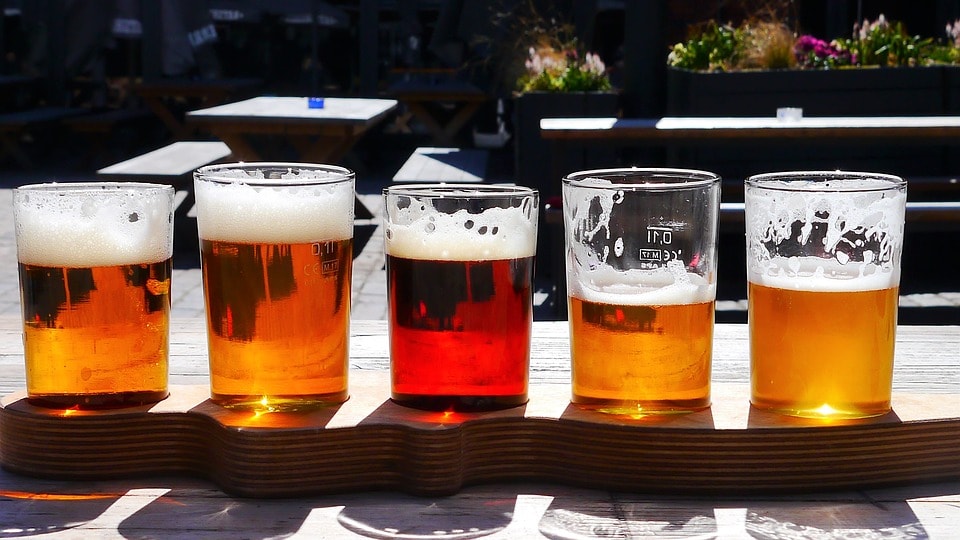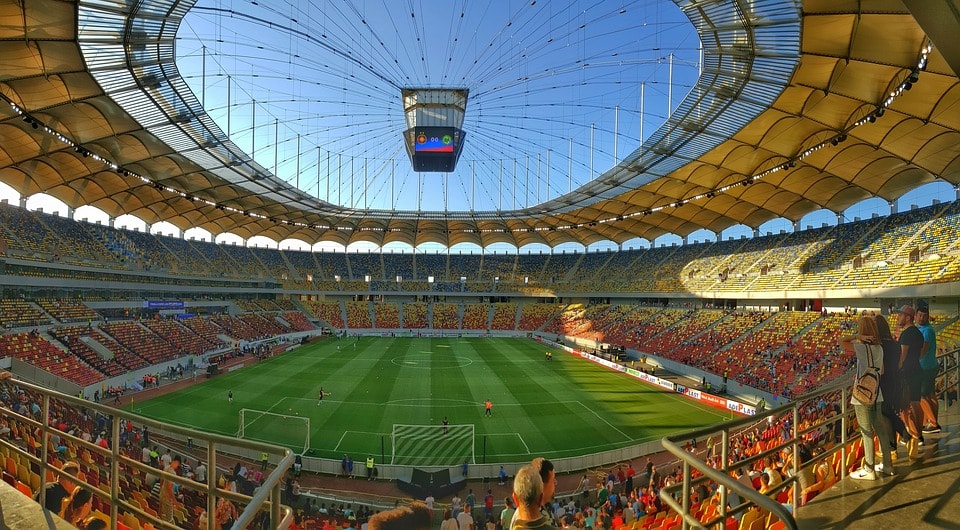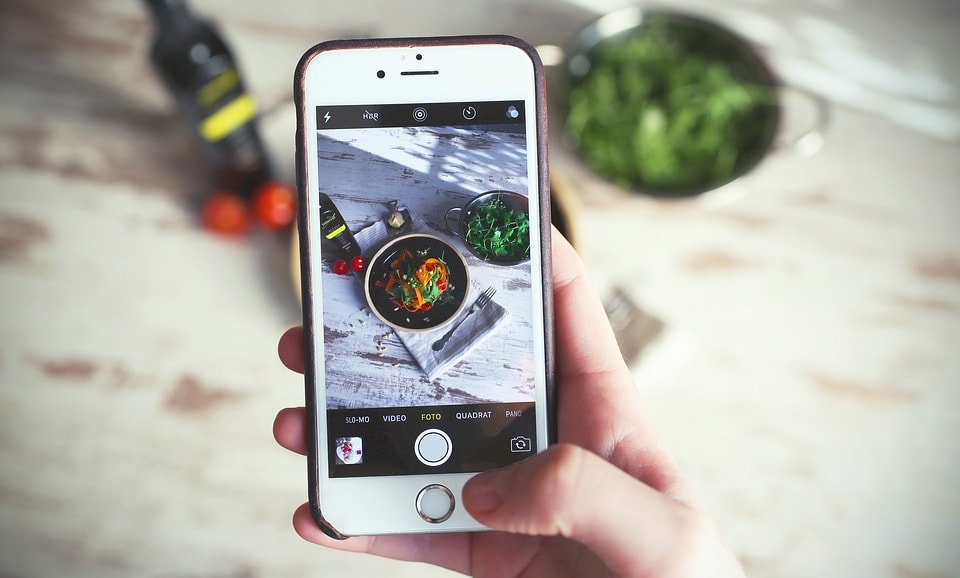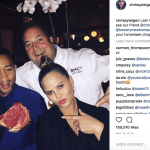
Free Wifi is a perk that some cafes, restaurants, and businesses offer to customers. Most restaurants already have Wifi to run their point of sale systems. You can upgrade to an affordable small business Wifi plan and offer it to customers. Instead of offering free nuts and candy, businesses offer Wifi as a freebie. Depending on what kind of restaurant you have, free Wifi may be worth offering to customers.
Why offer free Wifi to customers?
It can encourage them to stay longer, hopefully ordering more food and drinks. Your cafe can become a virtual workspace or a meet up for clients, attracting new customers. Students can choose to have a sandwich and a cup of coffee are your restaurant instead of the library.
According to the LA Times (data from consulting firm the Yankee Group)
- “96 percent of respondents prefer businesses that offer free Wifi”
- “79 percent of businesses say it keeps customers happy while they wait for service”
- “64 percent of respondents have chosen a restaurant based on free Wifi availability”
How much does Wifi cost?
Wifi plans are priced by the amount of data used and speed. The prices can also vary depending on the provider. Only some providers will offer business Wifi in your area. A medium sized restaurant will not need the same Internet power as a large office space. Many providers offer small business Wifi, which is more powerful than home Wifi, but less than what a large office or building would need.
Example:
AT&T small business Wifi starts at 60 dollars a month for 100 Mbps Internet speed with a price-lock guarantee of two years. Installation can cost up to a 100 dollars, but you may be able to find free installation with a promotion.
How fast should a small business Wifi be?
According to Quickbooks, 10 users will need 1.2 Mbps, 20 users will need 2.4 Mbps.
Should I make customers use a password for the Wifi?
If you live in a densely populated area, with lots of apartments nearby, you may find moochers. People who live in range of your Wifi may use it if there is no password. If there isn’t many houses or apartments nearby, the chance of moochers is lower. If you find that people are coming in just for the Wifi, you could choose to only give out the password with a purchase.
Facebook Check-in for Free Wifi
Some routers allow you to give customers Wifi access after they have “checked in” to your business’s Facebook page. Facebook check-in can help grow your social media presence and potentially reach new customers. Whenever customers check in at your business, all of their Facebook friends can see it. You can also give a “time out,” only allowing customers to use the Wifi for an hour or two after checking in.
Marketing
Make sure to advertise that you’re offering free Wifi. You can add “free Wifi” to your attributes under your Google My Business page. You can add a sticker to your door, or post about it on your social media channels.
Some business Internet providers offer “splash pages,” which is similar to a landing page. When a customer wants to sign on to your Wifi, they are taken to a landing page where you can add custom content before they are connected. You can offer promotions, coupons, or show an event calendar. You can choose for the Wifi to be password protected or just put a “connect” button that will let them use the internet.
Customers are beginning to expect free Wifi at cafes and smaller restaurants. Free Wifi is also welcome at even larger restaurants and chains. It can encourage customers to post pictures on social media, which is free advertising. You can attract new customers looking for a spot to do work and grab a coffee or a bite to eat. Your restaurant or cafe could be a meetup place for businesses and virtual employees.

Protected by the anonymity of the Internet, customers sometimes write reviews that can be harsher than what they would be comfortable saying in person. Restaurants, cafes, breweries, and other food service establishments can be seen as solely a business, without any thoughts of the people who work at it. Behind every restaurant is the owner, manager, and staff who put their heart and soul into each dish. How do you handle bad restaurant reviews? Should you respond to negative reviews online?
Why Online Reviews Are Important
First, it’s important to be aware of what customers are saying, both the negative and positive. Negative reviews can be disheartening, but are helpful if little changes can be made to improve your restaurant. If multiple customers are complaining that the fries are too salty, try them yourself and see. Customer complaints can alert you to little problems that may have slipped your notice, like unclean bathrooms. Bad reviews can also hurt potential business. New customers who are debating whether or not to dine at your restaurant may do a quick “Google Search” to see what the reviews say. Bad reviews and poor ratings can lead them to choose a competitor.
Where to Find Your Restaurant’s Reviews Online
Popular restaurant review sites are Yelp, Google My Business, Zomato, Zagat, and Trip Advisor. You can also check the comments on your restaurant’s social media page. If you don’t have any social media pages for your restaurant, read why your restaurant needs an online identity.
How to Respond to a Negative Review
It can be hard not to take bad reviews personally. Customers can be rude and your first instinct will be to refute the negativity and defend your restaurant. According to the National Restaurant Association, that’s the wrong move and can make the situation worse. Read the review without the emotions and see if there is any room for improvement. If you’re too emotionally charged, consider having an employee to respond to the customers instead.
Entrepreneur.com recommends responding regularly to customer complaints online. Some sites like Yelp let you choose to leave a public comment or privately message the customer. Polite public responses expressing concern may be more helpful, as it will show other customers that you care, are listening, value their feedback, and are trying to fix the issues. Don’t forget to respond to the positive reviews too!
Yelp’s 3 Things to Keep in Mind as you respond to customers:
- Your reviewers are your paying customers
- Your reviewers are human beings with (sometimes unpredictable) feelings and sensitivities
- Your reviewers are vocal and opinionated (otherwise they would not be writing reviews!)
Negative reviews online can be discouraging and aggravating. Sometimes it can feel like a thousand things can go right, but reviews tend to highlight the one thing that went wrong. Regularly checking online reviews can give a better indication of how customers are feeling, than checking for happy faces and going up to customers after their meal and asking “how was everything toinght?” Many customers feel more awkward voicing their opinion in person, and would rather post negative comments online. Respond politely to reviews (the positive ones too) to show customers you value their opinion and are working on making changes whenever posisble.

In 2017 people moved away from the bar scene and into the cool and occasionally hipster brewery scene. Drawn to the allure of craft beer, patrons flocked to breweries to relax and play shuffleboard. Deciding on a point of sale system for you brewery can be different process than a traditional bar or restaurant. Choosing the best point of sale system for your brewery depends on what you are looking for, reporting, handheld tablets, or customer loyalty. The right point of sale system will help your team work efficiently, boosting profits, and increasing the overall customer experience.
Brewery Point of Sale Checklist
Inventory
Whether you brew your own craft beer or stock bottles and cans of your local favorites, keeping track of inventory is an important function of your point of sale. Inventory management allows you to monitor product stocks to make sure you never run out of customer favorites. See which beers aren’t selling well and discontinue them to make room for the best-sellers. Easy inventory management is important if your beer list is frequently updating. Be able to add new items and change prices quickly while tracking their success.
Reliability
Can the point of sale system handle your industry? Be realistic about the conditions the system will be under. During rushes beer may spill, and the system make take an elbow or two. An iPad system may seem chic and trendy, but one unlucky spill, hit, or drop could end up costing you 600-800 dollars. Your system should be the last thing you worry about. Don’t be that business that has to tell customers “cash only” and turn away patrons because your POS system or wifi is down. Sometimes you only get one chance with a customer before they head over to your competition.
Reporting
Your POS system should be more than an electronic cash register. Each customer transaction offers valuable reporting information that is vital to your business. Analyze staff performance and schedule smartly. Use this data to take control and make your brewery as efficient as possible. Go beyond spreadsheets and use graphical reporting to give visual representations of your brewery’s performance. Whether you opened your brewery out of business savvy or love of craft beer, understand your business’s cash flow. Give yourself option to create and receive reports remotely. Schedule regular reports and have them sent to your inbox, or if you have a sudden question, create a report from your laptop at home.
Handhelds
Do you offer table service? Handheld tablets can make a huge difference in your business. Servers are quicker and more productive with handhelds. They can input orders at the tables while the customer is speaking, minimizing errors. Bartenders and servers do not need to write down orders or try to keep them in their short term memory as they wait in line at the POS station. Small touchscreen tablets allow bartenders and servers to keep up with the customers and place orders in real time. Faster order input means faster order delivery, which means more profits for your brewery.
Retail
Are you serving just beer and snacks, or merchandise too? Merchandise like shirts, koozies, and decals help spread brewery brand awareness. What about beer to-go? Does your point of sale support a scanner? Don’t limit your offerings!
Promotions
Looking to bring in customers for happy hour? Need to sell the rest of a beer? Run promotions like BOGO or timed discounts like happy hour to attract customers and control your sales. Your brewery POS system should make promotions a breeze. Set happy hour pricing to immediately go into effect at 4pm on Friday. Set and forget. Create different promotions that you can set with a push of a button. Your point of sale system should make your life easier, not harder!
Bonus Features
Digital Signage
Paper menus are becoming passé, especially for the brewery industry. You may have wet tables, changing prices, or beers on rotation, which makes paper menus a major hassle. Digital signage can easily turn any TV into a menu board. Save costs on printers and paper, and use technology to your advantage. Updates your menu in seconds if you sell out of an item or want to run a special. You can also integrate other features like social media feeds, photos, and advertisements to market your brand.
Loyalty
It’s 2018, paper punch cards are a thing of the past. Your customers want to be rewarded for their patronage in unique ways. Check your wallet, how many paper punchcards or loyalty cards have you kept over the years? Customer rewards have turned digital. Loyalty programs are becoming web or app based. Give your customers tailor rewards. Why give the same reward to a customer that comes once a month and orders one beer and the customer that comes every Friday and Saturday and buys multiple beers? Modern customer loyalty isn’t just for customers. Digital loyalty programs allow you to use your customer data for marketing and to help understand your demographics. Communicate with your customers using text message or push notifications. Send them promotions, coupons, or information on events and specials right to their phones.
Choosing a brewery point of sale is an important decision that has a dramatic effect on your business’s efficiency and profits. Make the most out of each customer transaction, using the data to understand your business from every aspect. Make sure your brewery point of sale supports all of your business’s need and allows you to grow.

When you’re watching a show or game, the last thing you want to do is get up and go stand in line at the concession stand. Every minute you spend waiting for your food and drink, is a minute taken away from the event you paid to see! You could wait for intermission, like everyone else, but the lines become so long, it’s often not worth it. Wouldn’t you rather use your phone to order and have it delivered to your seat or skip the line at concession? 87 percent of people would! In seat ordering increase profits for venues like stadiums and auditoriums.
Widen the Sales Window
In seat ordering allows customers to place orders on their smartphone or using a tablet. Without in seat ordering, most concessions are limited to the 15-30 minute intermission or halftime to make their sales for the event. Customers are put off by the long lines, congestions, and inevitable waits as the kitchens are overwhelmed during this short window of time. At sporting events, 42 percent of people are discouraged from ordering concessions because of the long lines. Mobile ordering allows customers to place orders in their seat, and the food is either delivered directly to them, or they can skip the line at concession and pick up their food. They can pay directly through the app, so there is minimal waiting involved.
Increase Customer Experience
Stadiums are loosing fans, as 57 percent of people rather watch the game at home rather than going to the stadium. Fans go to see events like plays, concerts, and sporting events live because of the experience. Is typically not the cheapest option, but it is an overall better experience to most. Customers are not able to have the full experience with food, beverages, and retail because of the long lines and inconvenience of missing part of their event to go wait for their food. In seat ordering allows customers to make the most out of their event.
Customer Retention
In seat ordering can be combined with loyalty to engage customers and focus on retention. Each time a customer puts in an order, they can earn points to redeem for future purchases. Mobile loyalty apps allow you to connect with customers, and send them information like coupons, discounts, and information directly on their phone through push notifications or text message (SMS). You can use customer data to get a better look at demographics and spending habits, which can help with future marketing campaigns.
Maximize Revenue
The right point of sale system integrates the in seat ordering and loyalty information for data collection. Reports allow you to take control of your business, and use analytics to maximize efficiency. You can easily see which items are best sellers, to make sure you don’t run out, and get rid of other items that do not perform as well. Customer information is saved and can be used for marketing campaigns and communication.
Repeat Sales
Concession stands are notorious for long lines that frequently make customers have to choose between watching their event or having a snack. Mobile and in seat ordering allows customers to make multiple purchases throughout the game. The main sales window is expanded beyond the short intermissions. Customers do not have to deal with lines or waiting, which encourages spending.
In seat ordering is the modern way to enhance the customer’s experience at your venue. Loyalty can be integrated to increase customer retention and engagement. Comprehensive reporting lets you make the most out of your event, maximizing each seat’s potential revenue. Customers do not want to wait for their food and miss any of the action. They do not want to be crowded and congested during intermission or half-time, to try to put in their order before their even starts back up. The inconvenience is leading customers to for-go their snacks and sometimes even the entire event. In seat ordering focuses on bettering the customer’s experience while making the most out of the data.

Influencer marketing as one of the marketing trends to watch out for in 2018, according to Entrepreneur.com. Influencer marketing is incredibly popular on social media, as it is easy to track the influencer’s popularity through followers and post engagement. Top influencers, like celebrities, can get up to half a million dollars for one post. Nielsen found that 92 percent of people trusted an influencer more than a traditional advertisement or celebrity post.
What is an Influencer?
An influencer is someone who has an above-average amount of followers on their blog or social media channels. Influencers have a specific niche like food, or even more speck like pasta or ice-cream. Influencers are trend setters, and their opinions are weighted heavily. If the influencer likes your restaurant, hotel, or cafe, their followers will be itching to try it! Influencer’s followers are interested in the particular niche, making them a perfect target audience for companies. Micro-influencers have anywhere from 1,000 to 50,000 followers.
What is Influencer Marketing?
Influencer marketing involves paying an influencer or giving them something for free, in exchange for a review or a social media post involving the product. This post is considered sponsored, and has the potential to be viewed by all of the influencer’s followers. If you choose the right influencer, you can reach new audiences in a more effective way than traditional social media marketing. A successful influencer post can cause a spike in followers too.
 This post by Chrissy Teigan (with John Legend) may have been a sponsored post. It was posted before celebrities and other influencers had to disclose the post as an advertisement. The post had over 150,000 likes and comments. Chrissy may have just been helping a friend, but its more probable that she was offered a free meal and some cash for the post.
This post by Chrissy Teigan (with John Legend) may have been a sponsored post. It was posted before celebrities and other influencers had to disclose the post as an advertisement. The post had over 150,000 likes and comments. Chrissy may have just been helping a friend, but its more probable that she was offered a free meal and some cash for the post.
Influencer Marketing in Hospitality
The hospitality industry is a perfect industry for influencer marketing because it is very visual. Food is one of the biggest topics on Instagram, which is based on photographs rather than text like Twitter. Food blogging has taken off, and there are many different bloggers with varying followings on the scene. You can have a broad blogger who tries all of the foods in an area, or a highly specialized one who travels around the world looking for the “best of” a certain category. Hotels, stadiums, and auditoriums also photograph well and make for great social media posts. It’s easier for an influencer to take a picture with a plate of pasta or in pristine hotel room, than a vitamin or lotion. It also seems more natural because everyone eats and visits hotels, or auditoriums. It seems more genuine then the influencer taking a blatant picture of a product.
Find Micro-Influencers
The first step into influencer marketing is finding your micro-influencers. Kim Kardashian is likely not in your business’s marketing budget, especially for an independent restaurant or cafe. A micro-influencer will be a lot more affordable, and may have a following that’s specific to your restaurant’s specialty or location. You can find these micro-influencers by doing a Google search for the top bloggers in your specialty ex. “Food Bloggers in Orlando,” and read their blogs to see if they’re a good match. You can also search within the social media platforms. If you go on Instagram you can search “Food Bloggers Orlando” and a list of hashtags and accounts will pop up. If you find a relevant blogger, you may be able to find others based on the accounts they follow. Typically the blogging community is tight-knit and many bloggers follow one another.
How to Reach Out
You can reach out to a blogger typically on their blog, through a direct message on social media, or through the email listed in their “about section” on their social media page. Many influencers will say “for inquires please email ___@___.” Always check their social media pages and blog to see their engagement. Likes can be bought, so its better to check their influencer status by seeing if their posts get many likes, retweets, and comments to gage their legitimacy.
Payment
You will be able to negotiate a contract with the influencer if they are interested. If the influencer is still rising, you may be able to offer them a free meal, stay, etc in exchange for a positive review and post. If the influencer is more established, they may want payment on top of the free product.
Is It Worth it?
For the right influencer, absolutely! Your restaurant, bar, cafe, or hotel will be able to reach thousands of potential customers with one post. Influencers are seen as reputable and highly trusted, so the post is weighted more than a regular advertisement would be. Influencer marketing is the new social media marketing, and is only going to grow in 2018. You can jump aboard this trend before your competition catches on!

One of the main keys to running a successful restaurant is customer retention. You want loyal customers coming back for more, increasing their spend, and bringing friends. Loyal customers are worth more than new customers. Loyal customers help spread positive word-of-mouth, by sharing pictures on social media, writing good reviews, and telling others about your business. How do you boost customer retention? Reward your customers, offer a great experience, have a social media presence, create a brand, and offer events and other incentives to come each week.
Loyalty Programs
Rewarding customers is easy with the right loyalty program. You can use points, punchcards, or an app to incentivize customers to return. Points or punchcards can be based on number of visits or spending. A loyalty app is a more modern way of rewarding customers, using technology to offer tailored rewards. All customers are not equal, so why should their rewards be? Should you give the same reward to a customer who spends 100 dollars a week as one who only spends 15? The goals are different. You want the higher spending customer to keep returning and you want to increase the spending of the other. Apps also allow for enhanced customer communication, you can use push, sms, or email to send them promotions or let them know about new specials or events.
Online Reviews
What do your online reviews say? Bad Yelp or social media reviews could be negatively affecting your customers. If you’re reviews aren’t filled with happy customers raving about the food and the experience, potential or existing customers may decide to go to a competitor with better reviews. Even if a customer had a great time, they may think it was a fluke based on the negative experiences of other customers. Online reviews are a great way to see how your business is doing. All customers aren’t vocal, you may not be able to tell a customer is unhappy. Their problems go unseen until post about it. Read your online reviews and make the necessary changes. If your fries are too salty, talk to the kitchen. If your bathrooms are dirty, start having your employees check the bathrooms more regularly.
Social Media Presence
Social media helps restaurants, bars, and cafes connect with customers. You can use visual platforms like Instagram to showcase beautiful pictures of your menu items. Facebook can be used to make event pages and invite your loyal customers (hopefully they will invite their friends). Twitter is great for posting updates like new specials or promotions. You can interact with your customers, let them feel like they know you. Repost their pictures and listen to their comments. You can ask questions, get opinions, and make them feel like part of the “family.”
Create a Brand
Starbucks vs Dunkin Donuts, most people have a preference. Is it truly about the coffee or is it about the brand. Make your business unique, set it apart from your competitors. Give your customers something only you can give them. You could make your business exclusive. Make it the “it” place for date night, any other option is “less than.” Your business could be a close-knit family; offer shirts, name a special after a favorite customer.
Make it fun
The customer experience can be more important than the actual food or drinks when it comes to customer retention. Fun events like trivia, live music, or themed nights can turn customers into regulars. Weekly events give customers a reason to return besides the food or drinks. Exclusive events like a special tasting menu focusing a foreign cuisine or special ingredient can create an experience that encourages retention. If the event is successful, the customers will be looking forward to the next one.
The goal of customer retention is to increase “regulars.” “Regulars” are golden in the restaurant industry. Customers that keep coming back often bring friends, and can be encouraged to increase spend. If your business has “regulars” then it’s doing something right. It’s important to reward regulars to keep them returning.






 This post by Chrissy Teigan (with John Legend) may have been a sponsored post. It was posted before celebrities and other influencers had to disclose the post as an advertisement. The post had over 150,000 likes and comments. Chrissy may have just been helping a friend, but its more probable that she was offered a free meal and some cash for the post.
This post by Chrissy Teigan (with John Legend) may have been a sponsored post. It was posted before celebrities and other influencers had to disclose the post as an advertisement. The post had over 150,000 likes and comments. Chrissy may have just been helping a friend, but its more probable that she was offered a free meal and some cash for the post.